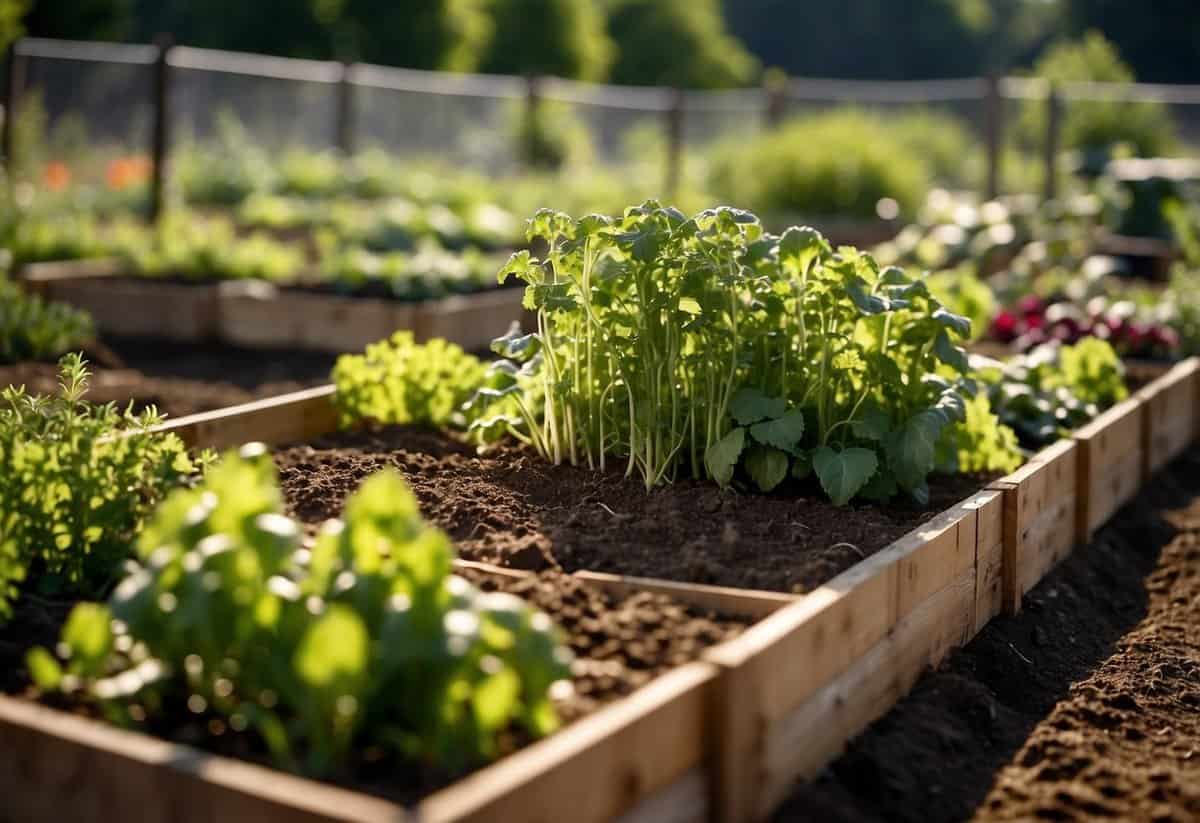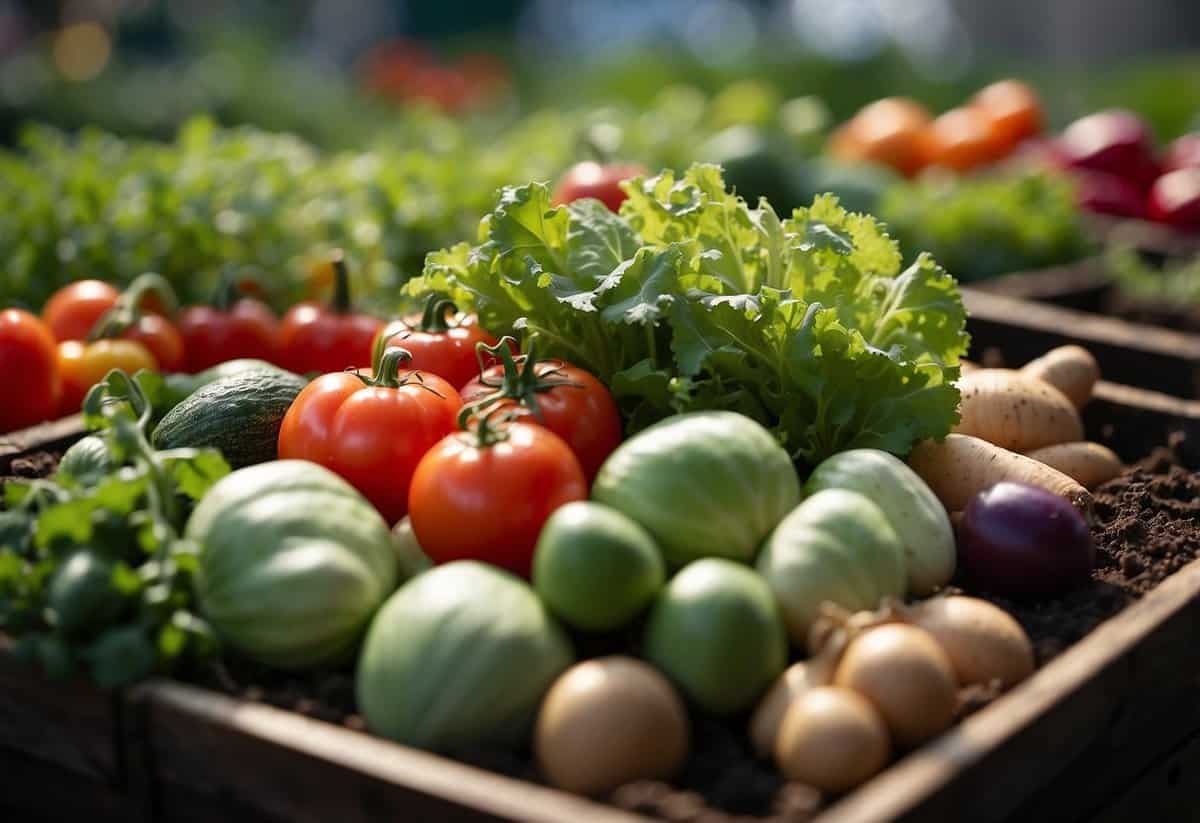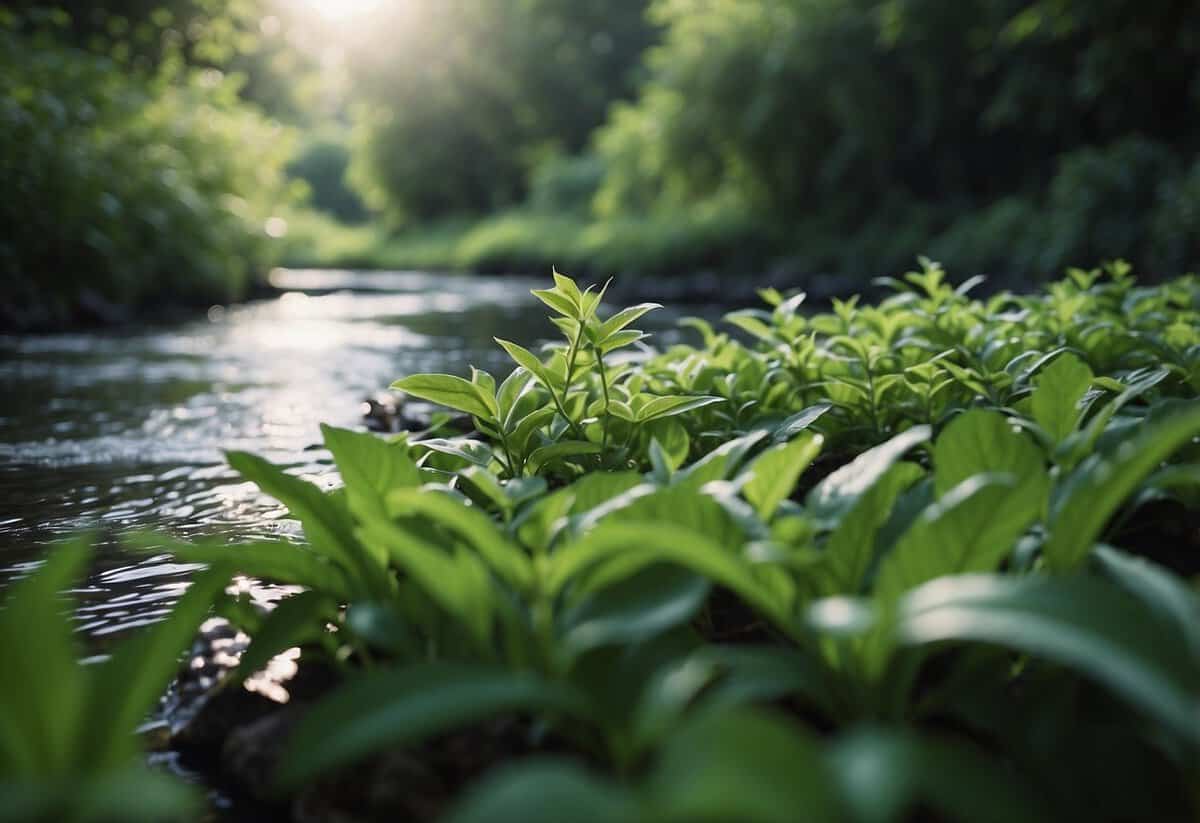Small Vegetable Garden Tips: Easy Tricks for Beginners
Starting a small vegetable garden can be a rewarding experience, whether you have a spacious backyard or just a small balcony. By using smart planning and creative techniques, you can maximize your space and grow a lush, productive garden. Imagine the joy of harvesting fresh, homegrown veggies right from your own garden!

Your small vegetable garden doesn’t need to be overwhelming. With a bit of guidance, you can turn even the tiniest plot of land into a thriving garden. From choosing the right plants to figuring out the best layout, you’ll find that a few simple tips can make a huge difference.
1) Start with Easy-to-Grow Veggies

When beginning your vegetable garden, choose plants that are simple to grow. Lettuce is a great choice for beginners because it grows quickly and needs little care. Plus, it can be grown in garden beds or containers, making it very flexible.
Zucchini is another easy option. It thrives in full sun and can grow up to three feet tall. New varieties are resistant to common diseases, so they’re less likely to fail.
Radishes also grow fast and are perfect for impatient gardeners. They take only about a month to mature. Plant them in a sunny spot, and you’ll have fresh radishes in no time.
For more detailed information, check out these 31 Easy-to-Grow Vegetables for Beginners.
2) Use Raised Garden Beds

Raised garden beds are great for small spaces. You can plant vegetables closer together because there’s no need for walking paths. This makes the most of your space.
Another advantage is better soil. You can control the soil mix, which can help plants grow better and reduce weeds. Plus, raised beds are easy to access and maintain.
Using materials like cedar, you can build your own. There are many DIY ideas to get creative with your garden layout.
3) Choose Compact Varieties

In a small vegetable garden, selecting the right plants is crucial. Look for compact or dwarf varieties. These plants take up less space and still produce plenty of vegetables.
For example, cherry tomatoes and mini bell peppers are excellent choices. They grow well in tight spaces and yield a lot of fruit.
Consider plants labeled as patio, pixie, tiny, or baby. These are bred specifically for small gardens. Compact varieties like dwarf beans and radishes are also perfect for maximizing your garden’s output.
Don’t forget about vertical gardening. Use trellises for vining plants like cucumbers and peas. This way, you can grow up instead of out and make the most of your small space.
4) Regularly Rotate Crops

Rotating crops means growing different vegetables in the same spot every year. This helps prevent pests and diseases from building up in the soil.
Moving crops around also keeps soil nutrients balanced. Heavy feeders like tomatoes can deplete the soil, so rotate them with light feeders like carrots or beans.
Remember, some plants, such as perennial herbs, should stay in the same spot.
5) Implement Companion Planting

Companion planting helps your garden thrive by pairing compatible plants. For example, basil grows well with tomatoes, improving both flavor and growth.
Tall plants like corn provide shade for leafy greens such as spinach. Bush beans can be planted next to cucumbers to create a mutually beneficial environment.
Using companion planting in your garden can make your plants healthier and more productive.
6) Invest in Quality Soil

Good soil is key for a thriving vegetable garden.
Use a high-quality potting mix that is well-draining and nutrient-rich. Avoid using garden soil in containers, as it can become compacted.
Adding compost can improve soil structure. This will help your plants grow stronger by providing essential nutrients.
Remember to check soil moisture regularly, and ensure your plants get enough water.
7) Water Consistently

Watering your vegetable garden consistently is crucial.
Make sure you water at the same time each day. Mornings are best because less water evaporates.
Use a watering can, a hose with a sprinkler, or consider installing a soaker hose for even distribution.
Check the soil regularly. If the top inch is dry, it’s time to water again. This helps keep the soil moist and your plants happy.
8) Mulch to Retain Moisture

Using mulch in your vegetable garden is a great way to keep the soil moist. Mulch acts like a blanket, covering the soil to hold in water.
Aim for a mulch layer of about 2 to 4 inches. This depth helps prevent water from evaporating while still letting rain reach the soil.
Natural mulches, like straw or wood chips, can also provide nutrients as they break down. Synthetic mulches, like black plastic, can help warm up the soil in early spring. Choose the type of mulch that suits your garden’s needs.
For more tips, check out these best practices.
9) Practice Vertical Gardening

Vertical gardening is perfect for small spaces. Using structures like trellises, you can grow more in less area.
You can make a living wall by attaching a trellis to a wall and securing pots with herbs, vegetables, and flowers.
Green beans, for example, can climb up to 8-10 feet, making the most of your space.
Consider using stackable planters for even more growing options. These are great for creating moveable gardens.
10) Prune and Trim Often

Pruning your vegetable plants helps them stay healthy and productive. Focus on removing dead or yellowing leaves. This can prevent disease and improve airflow around your plants.
For plants like tomatoes and peppers, trim off excess sucker branches. This helps the plant direct its energy to fruit production.
Pruning also helps manage plant size and shape. By cutting back overgrown branches, you can keep your garden neat and tidy. Regular trimming encourages better flowering and fruiting in your plants.
Choosing The Right Vegetables

Picking the right vegetables for your garden depends on your local climate and the amount of space you have.
Assessing Your Climate
Different vegetables thrive in varying conditions. Tomatoes and peppers prefer warm temperatures, while lettuce and spinach grow best in cooler weather. Check the average temperatures and frost dates in your area to select suitable crops.
Warm-season vegetables need at least 60°F (16°C) soil. Cool-season vegetables can tolerate a light frost and grow in 40°F to 75°F (4°C to 24°C) temperatures. Local garden centers can also offer advice on the best options for your climate. Keep in mind that some plants need more sun or shade than others.
Determining Available Space
For small gardens, compact or dwarf varieties are perfect. Vegetables like radishes, carrots, and garlic take up little space. Herbs like basil and cilantro can be grown in containers on patios or balconies.
Consider using raised beds for a small garden. They help control soil quality and drainage. You can also grow vegetables in containers, which you can place on a patio, balcony, or even indoors. Choose vertical gardening techniques like trellises to maximize your space for climbing plants like cucumbers and beans. This will help you manage your small space efficiently.
Soil Preparation And Maintenance

To grow a successful vegetable garden, you need well-prepared and maintained soil. Key steps include testing and amending the soil, as well as employing effective mulching techniques.
Testing And Amending Soil
Testing your soil is crucial. It helps you understand its nutrient content and pH level. You can buy a soil testing kit from a garden store or send a sample to a local extension service. Knowing your soil’s pH will guide you on what amendments to use.
If your soil is too acidic, add lime. For alkaline soil, use sulfur. Additionally, incorporate organic matter such as compost or aged manure to improve soil structure and fertility. This boosts nutrient availability and water retention, giving your vegetables the best start.
Perform these tests and amendments annually to keep your garden soil at optimal health.
Mulching Techniques
Mulching is a great way to keep your soil healthy. It helps retain moisture, suppress weeds, and regulate temperature. Organic mulches like straw, wood chips, or grass clippings are best. Spread a layer, about 2-3 inches thick, around your plants but avoid piling it against the stems.
For vegetable gardens, straw and grass clippings work well. These mulches decompose over time, enriching the soil with organic matter. Additionally, using newspaper or cardboard under the mulch can provide an extra barrier against weeds.
Remember, mulching not only conserves water but also contributes to healthier, more productive plants. Make sure to replenish mulch as it breaks down to maintain its benefits throughout the gardening season.







